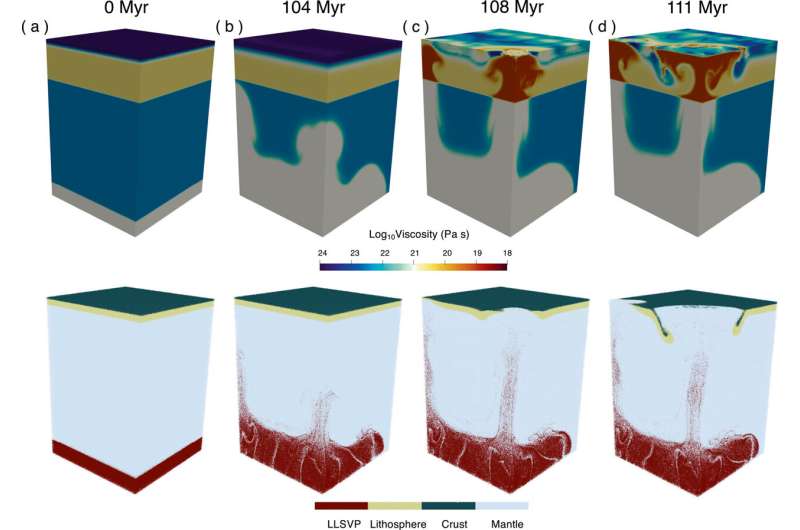May 8, 2024 report
This article has been reviewed according to Science X's editorial process and policies. Editors have highlighted the following attributes while ensuring the content's credibility:
fact-checked
peer-reviewed publication
trusted source
proofread
Computer models suggest modern plate tectonics are due to blobs left behind by cosmic collision

A small team of geologists and seismologists at the California Institute of Technology has found evidence via computer modeling that suggest giant blobs of material near the Earth's core, believed to have been created by a cosmic collision 4.5 billion years ago, may be responsible for modern plate tectonics.
In their study, published in the journal Geophysical Research Letters, the group used existing data on the blobs, known more technically as large, low-velocity provinces (LLVPs), and used it to create computer simulations and models showing their impact on the Earth over long time scales.
In the 1980s, geophysicists discovered what they described as giant blobs of unknown material near Earth's center—one below the Pacific Ocean, the other below parts of Africa. Then, last year, another team found evidence that the blobs (LLVPs) are remnants of Theia, a planet that struck the Earth 4.5 billion years ago. The rest of the debris from the collision, theory suggests, coalesced in Earth's orbit, forming the moon.
For this new study, the team in California used computer models to show what sort of impact the LLVPs may have had on the Earth's crust over the past millions of years, and report evidence that they may be responsible for modern plate tectonics.
Data for the models came from seismic readings that have shown the LLVPs are made up of different material than either the core or mantle. After some tweaking, the models showed that approximately 200 million years after Theia struck the Earth, pressure from the LLVPs led to the creation of hot plumes stretching from near the core to the surface. That caused some sections of the surface to sink, which led to subduction.
Subduction eventually led to the breaks in the surface that today serve as borders for tectonic plates. The researchers suggest their models may explain why some of the oldest minerals on Earth show evidence of subduction.
More information: Qian Yuan et al, A Giant Impact Origin for the First Subduction on Earth, Geophysical Research Letters (2024). DOI: 10.1029/2023GL106723
Journal information: Geophysical Research Letters
© 2024 Science X Network





















